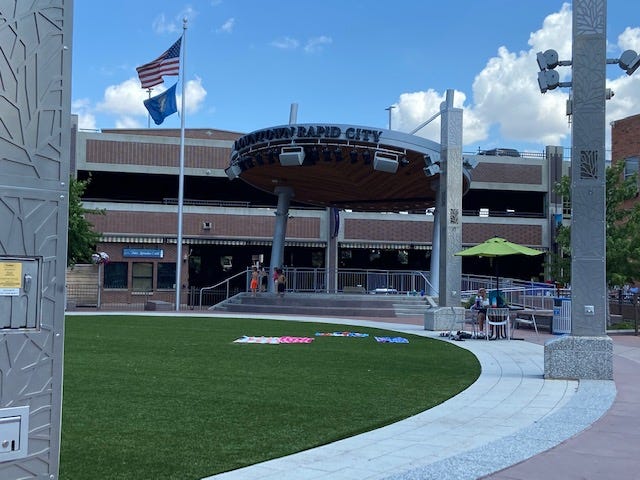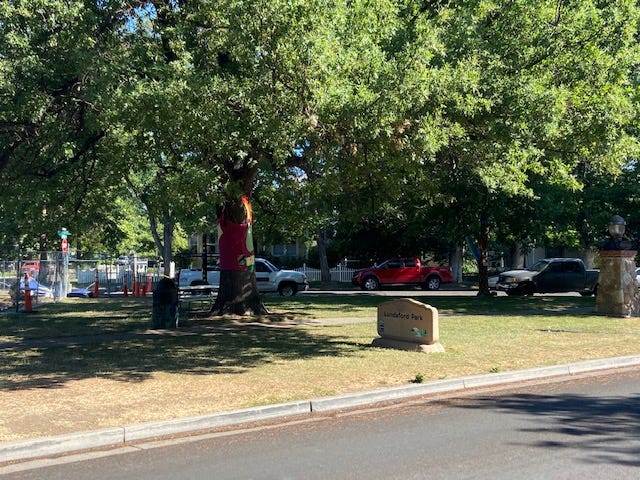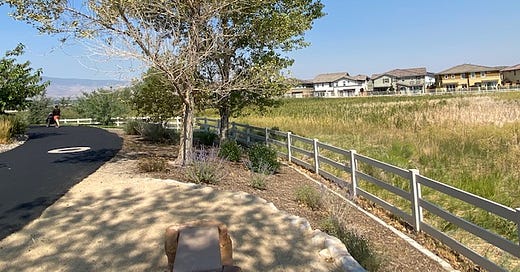Hi! I seem to have picked up several new subscribers so thanks for doing that and if you are interested, you can access prior editions through this page. I didn’t really know what this Newsletter was going to be about when I started. It was an evolution of some NextDoor posts about ward/neighborhood issues. But at this point it has migrated into an analysis and descriptions of the complex factors related to our community’s built environment as we proceed upon our trajectory.
The Meadowy Part of the Truckee Meadows
Taking up where I left a few editions ago, I am focused now on the growth and development of the southeast valley. This area was transitioning from ranchlands to suburbia when I arrived in Reno in 1998. Apart from unincorporated pockets along Geiger Grade it was still an agrarian landscape.
Two significant developments – Double Diamond and Damonte Ranch have been decades in the making. Damonte Ranch is an accomplished example of a planned community in terms of infrastructure planning, sensitive lands management and allocation of land uses. This is not to say that everything about Damonte Ranch and its build out out is extraordinaire. But it stands with Caughlin Ranch and Lakeridge as Reno’s most comprehensively planned communities. Each had a consistent character defining vision for a large part of our community and unfolded according to that vision over a pace of decades.
This is remarkable in that Damonte Ranch’s build out was interrupted by the Great Recession and upon recovery could have diverted directions. I’ve often wondered if Damonte Ranch did well because of continuous private local ownership. During this growth cycle, it seems like a lot of outside moneyed interests whether it be residential, industrial, or mixed-use development projects seem to be sponsored by people on layover.
The difficulties for this side of the valley are the fringe lands around Damonte Ranch. These are passed over lands or lands that were owned by different private hands that transferred later (e.g., Butler Ranch) and pose more building challenges. Whereas Damonte Ranch had economy of scale to address the significant wetland conditions of the area, it is unclear how successful some of these other projects will be in addressing that development challenge.
I have my doubts about the integrity of the development approval process as related to this part of the Truckee Meadows. There is a federal program that communities participate in related to floodplains and flood insurance, and our City has played loose with that program. We have relied upon out of date maps to design projects. Some of these maps were amended without going back and remapping where the floodplain to reflect flooding events (most notably in 1997) or as urbanization has changed the natural contours.
These replicate maps are the basis for approvals such as the Southeast Connector and projects like Daybreak even when we know past projects like Heron’s Landing probably did not have the best mapping data. The mapping data is important because it translates to the improvements that are required to make neighborhoods flood hardy. I am concerned that we really do not have a good sense of the possibilities of different flood scenarios in this side of the valley. All points to me, that the airport also now doubles as a floodwater storage area. The long laboring Truckee Meadows Flood Authority is tasked with updating the maps and that seems like reason enough for me to stay development approvals, but growth pressures dictate otherwise.
Lastly to the southeast valley but also applicable to Verdi, is the question how far up the foothills are we going to build. There are some in this community (and they were able to get a stealth bill through the Nevada legislature several years ago that thankfully expired) that want to go above Damonte Ranch High School and up over to Storey County with a connecting roadway network.
This would only be accomplished by putting connecting roads past a whole bunch of people homes who bought those homes under a community plan that did NOT SHOW such a connection. But unfortunately, our regional planning lacks integrity with respect to roadway planning. Just go ask people on this side of the valley who actually had the Southeast Connector removed from the Reno Master Plan at one point, only to have it reappear as a major project absent any basis in adopted plan documents.
I’ve been hammering on the need to tighten our growth projections to understand how much land we need to transfer from natural landscape status to one ready for building and thus expanding the urban footprint and at what pace. Reno Master Plan implementation on this consideration and several others has halted almost by design.
Knowing this information would help us tilt from our development driven model where the community’s future is more dictated by private land exchanges than a community land use need. With this model, we are developing helter-skelter (North Valleys up next) and often deficient of infrastructure and service provision. In addition to the inadequacies of technical information upon which to base decisions as in the floodplains as previously described.
Let’s Get Downtown Right
I was caught surprised as were others that University Nevada, Reno is in the process of taking over Lake Tahoe’s Sierra Nevada College. UNR wants to go up to the lake, but then again, who doesn’t? I guess they have some underperforming assets up for fire sale. Well, I have an offer for President Sandoval that I made to the last president. The City of Reno has some underperforming assets – the Bowling Stadium, the Events Center, the Ballroom and the old bus station. We will also own the baseball stadium in a decade or so. Let’s talk. I am dead serious. The university has land and facility needs to be met.
Although they are heading to the lake, UNR is stuck with its namesake and our downtown is not where a university president would want its host city’s nearby downtown to be in terms of revitalization or vitality. It is not getting much better and we’ve run out of options.
The City of Reno and generation of boosters have tried all the tricks. Baseball stadium, done. Tourism facilities, check. Redevelopment agencies and public infrastructure projects all tried. A hyped special assessment district – we are on our third run of that. Homeless services come and homeless services moved. Downtown city hall, movie theater, fancifully colored street fixtures and excessive lighting. It has all been tried. There simply are no other moves than university downtown investment.
I have arrived at the conviction (but always open to discussing realistic alternative strategies), that Reno will not be a successful city until the university crosses the interstate and puts a big footprint into our downtown. It is the only player capable of the transformation we need. And a few private apartment complexes for students will not get the job done.
Both Boise State and Portland State University have integrated magnificently into their host city’s downtowns. If UNR continues to gaze down from the hill, we will not get where we need to go.
In fact, evidence is pointing to UNR transitioning to a commuter college. An example of this is the soon to be built 800-space parking garage at the interstate edge that will disrupt a century old view corridor of the university’s Morrill Hall from Lake Street. Recent public and university construction has obliterated a fair share of what served as a modest adjacent commercial district that is an important college life asset. Perhaps this is the reason for the Lake Tahoe move, a satellite campus for commuter students from the south county and Carson and Douglas areas.
All I know is that through the Western Undergraduate Exchange, Nevada high school students have an expansive range of educational opportunities at comparable tuition levels to UNR in 15 other states. These include schools in spectacular settings (hello Silver City, NM where I lived 1996-1998) or in midsize cities that are well kept secrets (I checked out Billings, MT this summer and wow), in addition to the aforementioned urban cities (and Salt Lake City, Denver or Tuscon).

I don’t profess to know higher education, but I have worked on the town side of town/gown city issues for about 30 years now. There does come a time, when university leadership at both public and private colleges realizes that if their host city is not doing well that they need to step up because it is a drag on the school’s attractiveness. This is particularly critical to downtown and downtown adjacent universities. We may be arriving at that point soon.
Ward Updates
The Neighborhood Advisory Boards (NABs) are returning. During the COVID hiatus, all were on pause and the members’ terms expired. New members were appointed and the first meeting will be at 5:30 PM on Monday, August 9 at McKinley Arts Center on Riverside Drive. Please sign up here to get agendas.
We are also hoping to be able to stream these in some fashion so that people can stay home and also watch and submit questions in real time, but that might take some time. Things are changing right now with the Delta variant so please check the City calendar for any cancellations.
Also, with respect to the Riverside Drive apartments that are being constructed on portions of land that were previously Washington and Jones Streets, it got the go ahead. Some nearby neighbors appealed the issuance of the building permit to the City Council. Issues about the developer should get to build on the street and the building height were settled non-issues.
The legally defensible (for the City) issue was - did the administrator (in this instance City Manager Thornley) abuse discretion in issuing the building permit. I determined that he did but was not joined by the Mayor or any other Council members. My narrow finding was that he should not have allowed the developer to reroute utilities through adjacent Lundsford Park resulting in multiple tree death and other destruction of vegetation.

There were other nearby streets that the developer could have paid at their own expense to route utilities under or, as originally conceived many years ago, kept the utilities in the abandoned Washington Street. I felt strongly that the public and their park, should not have to bear the burden of this private need. Utilities run in streets, not in parklands for private purpose and this was an overbending accommodation of private interests against public ones.
The KIDS ARE BACK
Finally, we’ve all become a little less accustomed to the daily migration of school kids through the neighborhoods. They’ll be out and about in the next week or so. Please keep an eye out for them as you drive about and be mindful to keep it slow out there.
Jenny Brekhus is the Ward 1 Reno, NV, City Council Member. When opinions and views expressed, without other attribution, they are those of Jenny Brekhus and do not reflect official views or positions of the City of Reno or the Reno City Council unless otherwise noted. This publication and any response it generates communicated through any channel, may be subject to disclosure under Nevada Public Records Act if it substantively refers to City of Reno business.



